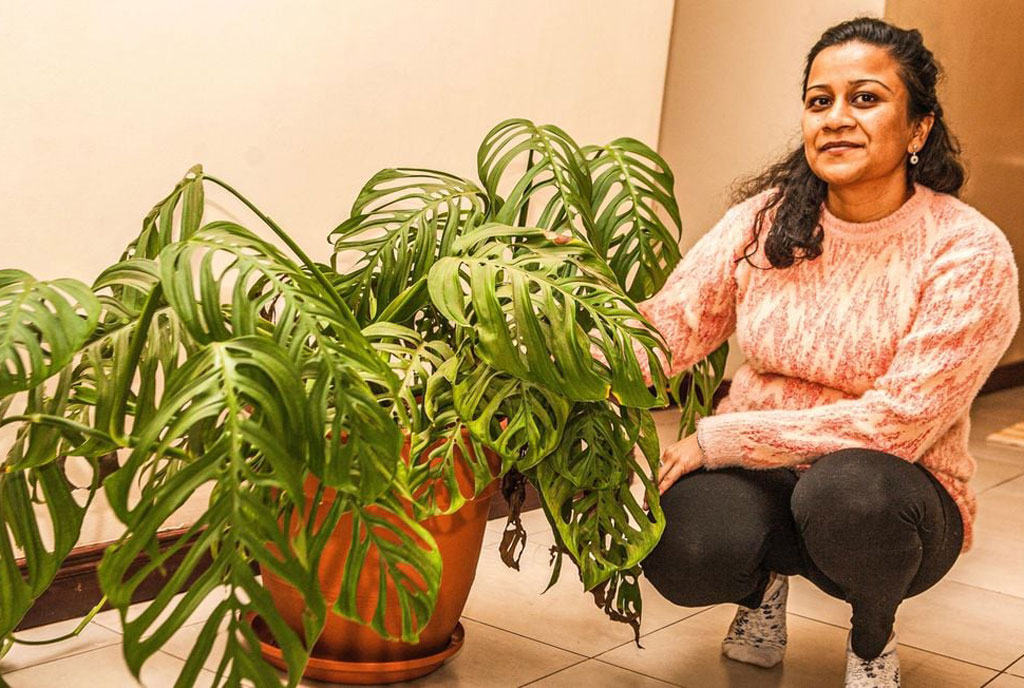Prime
Add a positive vibrancy with monsteras, philodendrons

What you need to know:
- The blooming season for monsteras and philodendrons is in the warmer season. When they bloom, their leaves become wider and increase in number.
Nowadays, plants have become a conversation starter. Making friends with other plant lovers online is not an uncommon thing. For Meera Shah and Nimmit Shah, who connected via Instagram, their uniting factor was their love for plants, particularly monsteras and philodendrons.
Monsteras and philodendrons are in the family of aroids and therefore have the same qualities. They are mostly indoor plants but can also flourish outdoors in pots or on the ground.
Nimmit has more than 30 Monsteras of different species. The most admirable are variegated monsteras.
“There are four types of variegated monsteras. We have the albo monstera that is white or cream. The aurea monstera is yellow, the mint monstera is green in colour and the sport monstera is light green,” she says.
Philodendrons also come in various types. You are lucky if you get the ‘painted lady’, which is a rare type of philodendron. Other types of philodendrons include the mamei, the neon philodendrons and the micon philos.
“The good thing with monsteras is that you can make babies [offshoots] from them easily. Once you grow the mother plant, you can cut off a cutting from a stem and propagate,” says Meera adding, “The area that is possible to propagate is where there is a node in the plant.
“When you cut, ensure that there is enough space and plant material. Ensure that it has aerial roots and put it in water till it develops well enough to put it in soil.”
Nimmit grows his plants in a shed in his home and a greenhouse.
“You just need to monitor it as it can get root rot. One of the biggest challenges with monsteras and philodendrons is root rot. Regularly change the water to keep off algae,” he says.
When they grow too long, monsteras and philodendrons need moss poles for support, to prevent them from falling over.
“Aerial roots are usually climbers and stick to concrete. If you give them support while growing by adding the moss pole they grow better,” Meera says.
The passion
Nimmit has been growing monsteras for the past three years. “I have grown up around flowers for a long time. While other people go to the gym to relieve stress, I take care of my plants,” says the structural engineer. The number of people growing plants as a hobby has grown over the years. I ask Meera why she thinks more people embracing plants.
“Life has become so demanding with all the responsibilities that one has. Therefore, taking care of plants is therapeutic to help one cope. For instance, I repot my plants alone. Even feeling the soil in your hands is therapeutic,” says Meera.
If you are a newbie plant parent, do not grow monsteras and philodendrons under direct sunlight. They require some sun, but not the full sun. “Morning sun is alright. You can do some filtered light,” she says.
Placing your monsteras and philodendrons under direct sunlight may scorch the leaves.
“During the cold season, I put them inside but on the window pane to keep them warm and still allow them to get some light,” adds Meera.
On watering, the only way to test if your monsteras and philodendrons have enough water is to put your finger in the pot.
“If the soil does not stick on your finger, it then means that the soil is dry and it needs some watering,” says Nimmit.
Monsteras and philodendrons are watered around twice a week.
“When you water, you should see the water running down through without sitting for long. Too much water will rot the roots. During the rainy season, it is not important to water it as often unless the soil is dry. Most house plants love humidity,” adds Meera.
To cut costs, Meera repurposes the kitchen wastewater.
Soil requirements
Monsteras and philodendrons require well-drained, airy and loose soil. Put holes at the bottom of your pot to make sure that it is well-drained. Always make sure that the soil is damp before adding fertiliser.





